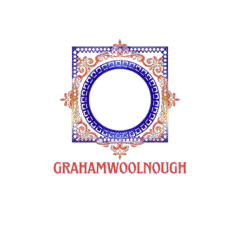Fashion designing is an extraordinary blend of creativity, craftsmanship, and culture that transcends mere clothing creation. It is a form of art where ideas, emotions, and personal expressions take shape through fabric, color, and silhouette. Every designer embarks on a unique journey, transforming inspiration into garments that not only appeal visually but also communicate deeper meanings about identity and society.
The process begins with imagination. Designers often seek inspiration from a wide range of sources such as nature’s patterns, architectural forms, historical eras, and the everyday environment. This initial spark fuels countless sketches and experiments, which gradually evolve into a cohesive collection. The challenge lies in balancing innovation with functionality, ensuring that designs are not only visually captivating but also wearable and comfortable. The choice of materials is crucial, as each fabric has its own texture, weight, and drape that influences the http://casinomarketingdesign.co.uk/ final look and feel of the garment.
Fashion is an ever-changing reflection of culture and society. It captures the spirit of the times and adapts to shifting social norms and attitudes. Designers have the power to challenge conventions and inspire change through their work, often using fashion as a platform to raise awareness about social issues. Traditional motifs and artisanal techniques are frequently woven into contemporary designs, creating a dialogue between heritage and modernity. This interplay keeps fashion relevant and dynamic, allowing it to tell stories that resonate across generations.
Sustainability has become a vital consideration in today’s fashion landscape. The industry’s environmental footprint has prompted a shift towards eco-conscious practices. Designers now emphasize the use of organic, recycled, and biodegradable materials while adopting production methods that minimize waste. The concept of slow fashion encourages the creation of timeless pieces that endure beyond seasonal trends, promoting thoughtful consumption. This movement redefines luxury, valuing craftsmanship and durability over mass production and disposability.
Technological advancements have revolutionized fashion designing in profound ways. Digital design tools enable precise experimentation with colors, patterns, and fits, reducing the need for physical samples. Innovations such as 3D printing and laser cutting open new possibilities for creative expression, allowing designers to push the boundaries of what garments can be. Additionally, online platforms and social media have transformed how designers showcase their work and connect with global audiences. These technologies democratize fashion, fostering inclusivity and innovation.
At its core, fashion designing is about human connection. Clothing serves as a powerful form of self-expression, enabling individuals to convey their personality, moods, and values without words. Designers create with the intention of empowering wearers, helping them to feel confident and unique. This emotional relationship between clothing and person elevates fashion beyond mere aesthetics to become a meaningful experience.
Aspiring fashion designers typically pursue education and practical experience to master the skills needed in this competitive field. Knowledge of textiles, sewing, and fashion history forms the foundation, but creativity and perseverance are equally essential. Successful designers understand market trends and consumer desires while maintaining their artistic vision, blending innovation with commercial viability.
In conclusion, fashion designing is a multifaceted discipline that merges art, culture, technology, and sustainability. It shapes how people express themselves and influences society at large. Through the visionary work of designers, fashion remains a vibrant, evolving language of creativity and identity.
